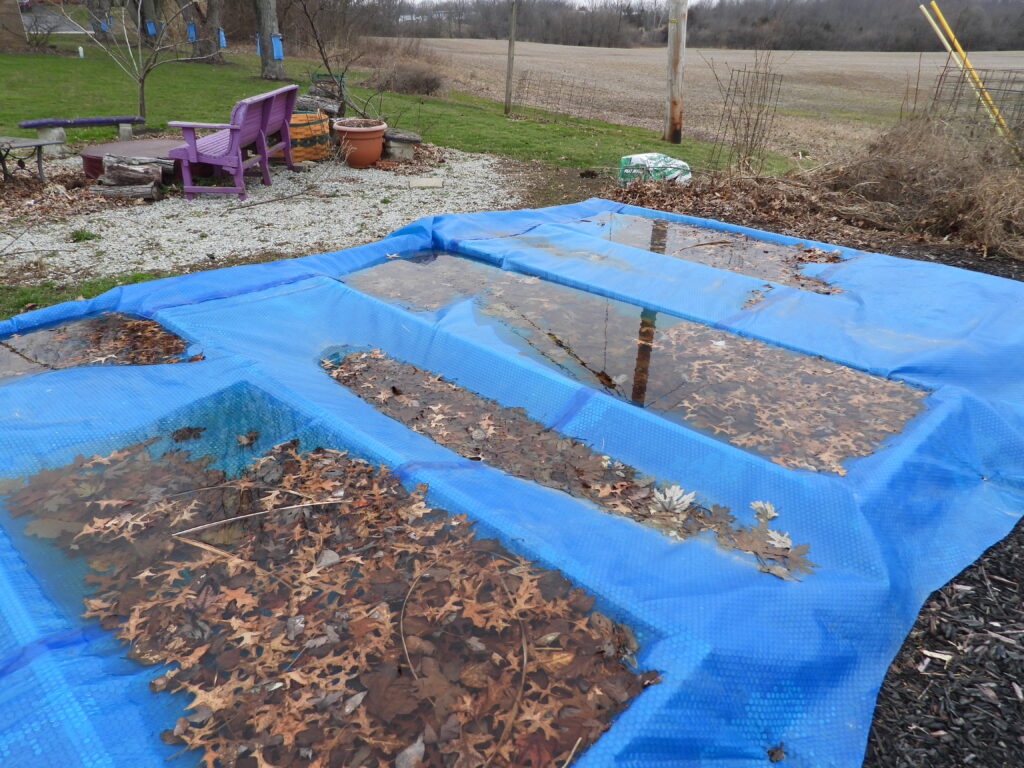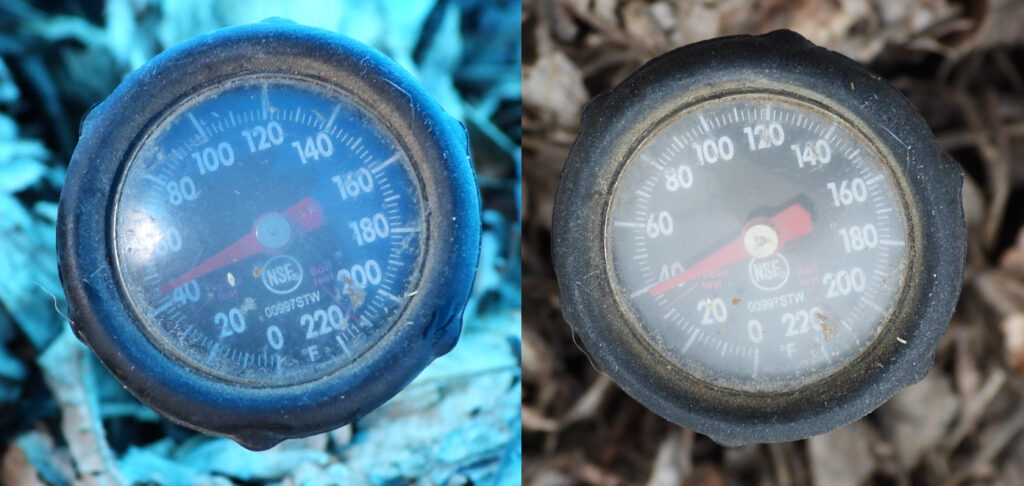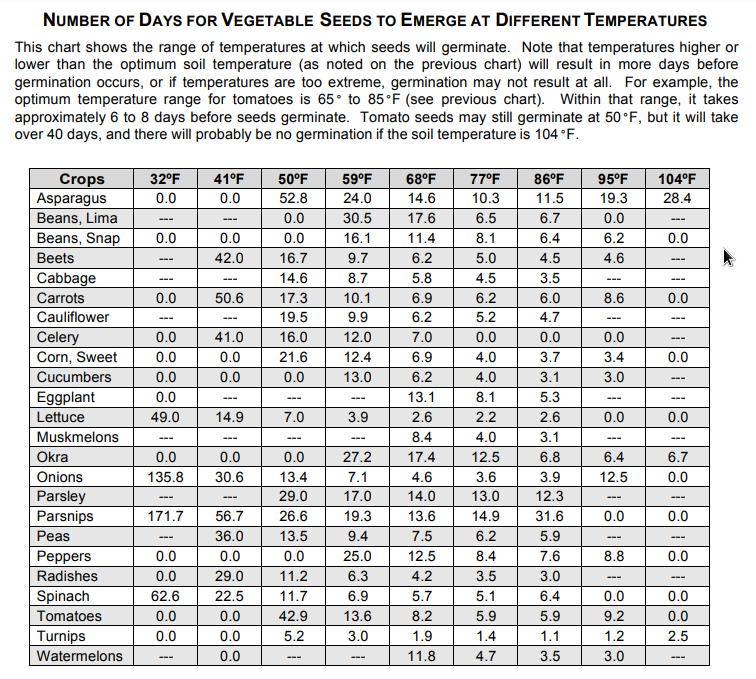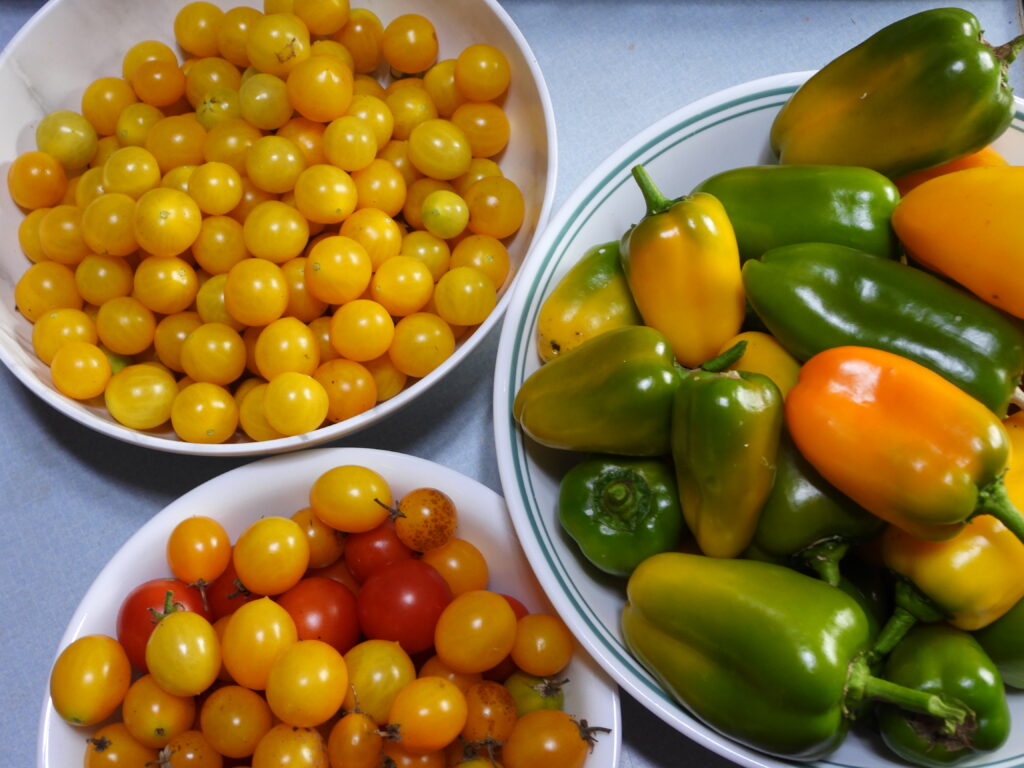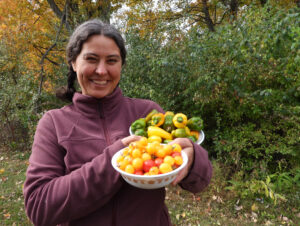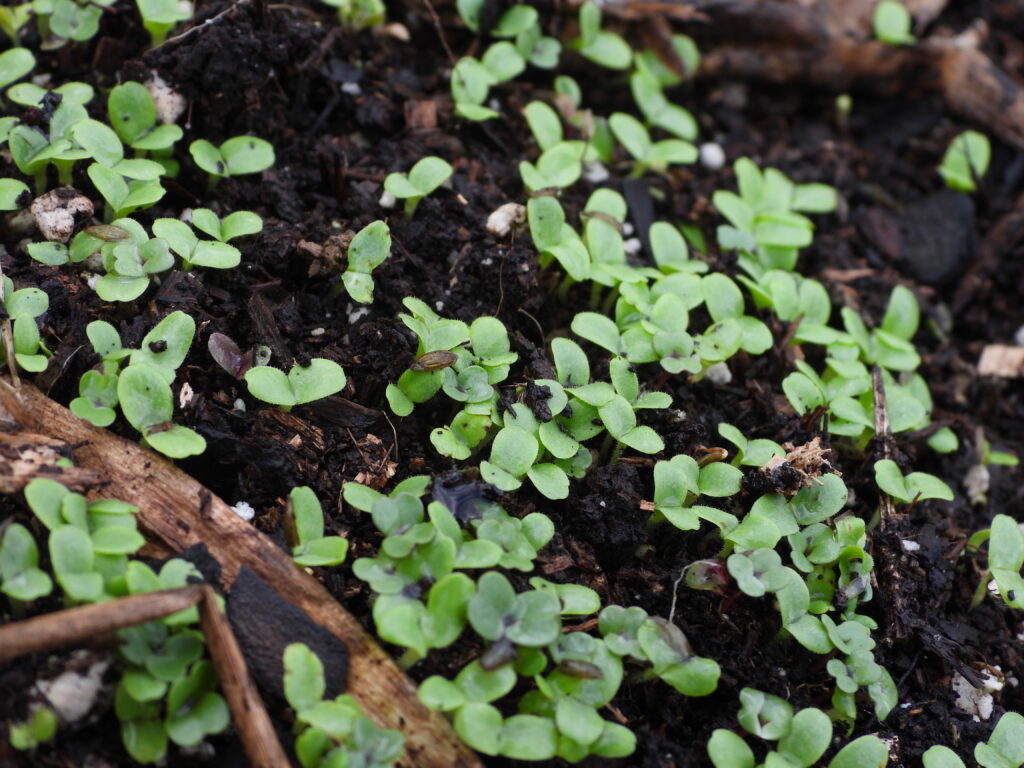
I like to direct-seed leaf lettuce under a row-cover-coated caterpillar tunnel in early February, a holdover from gardening half a zone warmer than where we are now. Most years, those early lettuce either don’t sprout or sprout and perish. This year is the outlier that makes me keep jumping the gun. Lettuce planted on Valentine’s Day is well established now at the end of the month.
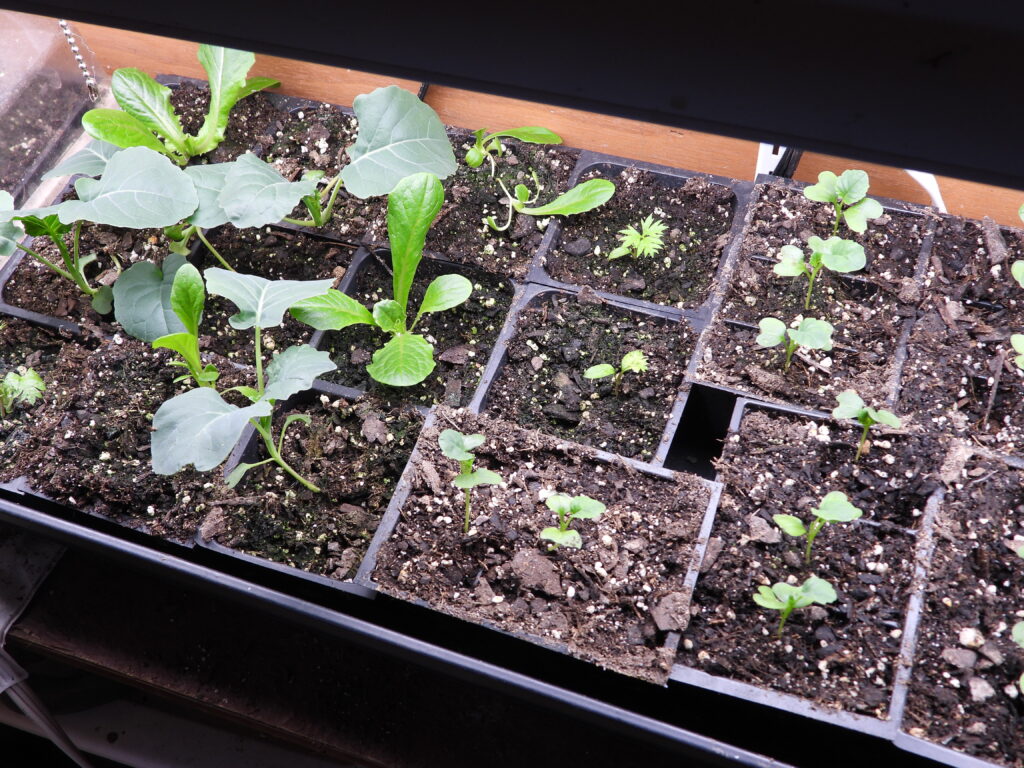
Meanwhile, the more dependable way to get a jumpstart on the garden year in our climate is by starting seedlings inside. I usually go for all-in-one flats, but Mark bought me a bunch of smaller containers that fit into a flat and I’m getting a lot out of the mix-and-match approach. This way, I can start a flat of veggies that germinate at different rates, leaving the slow germinaters (like parsley) behind under cover while pulling out the fast germinaters (like broccoli). Then I can start more seedlings to fill in gaps atop that all-important heat pad.
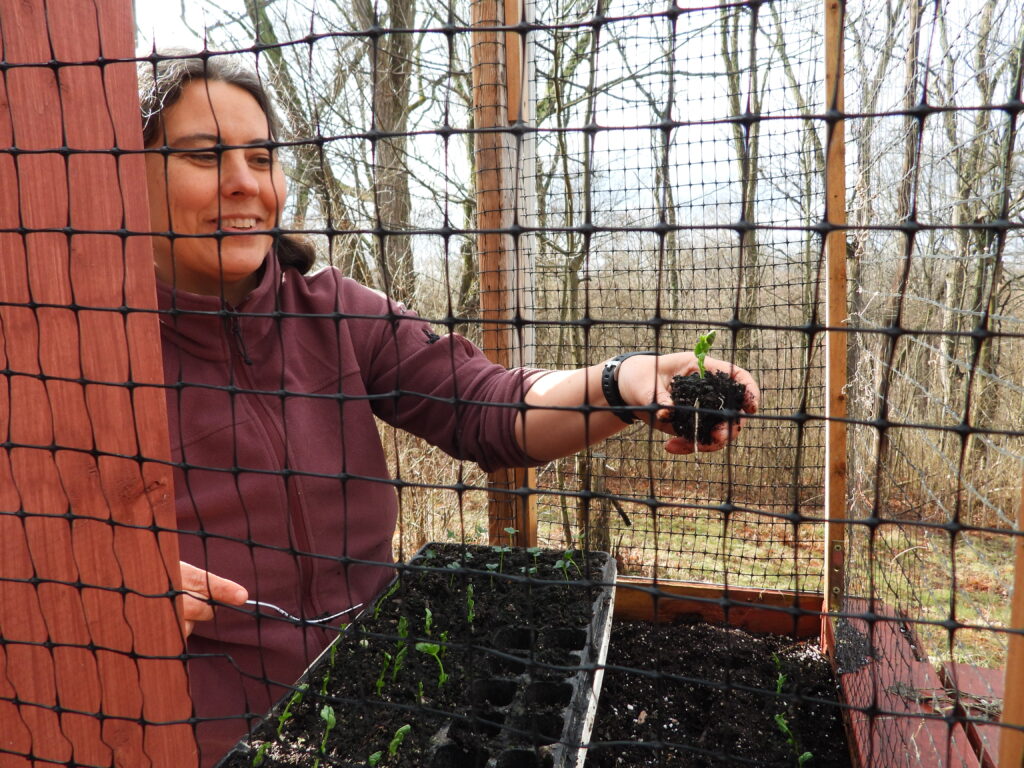
I’ve even gotten into starting peas inside, but those I do in fifty-section flats because the seedlings have to be set out as soon as the tops are up. Here, I’m planting the first flat into Mark’s porch raised bed.
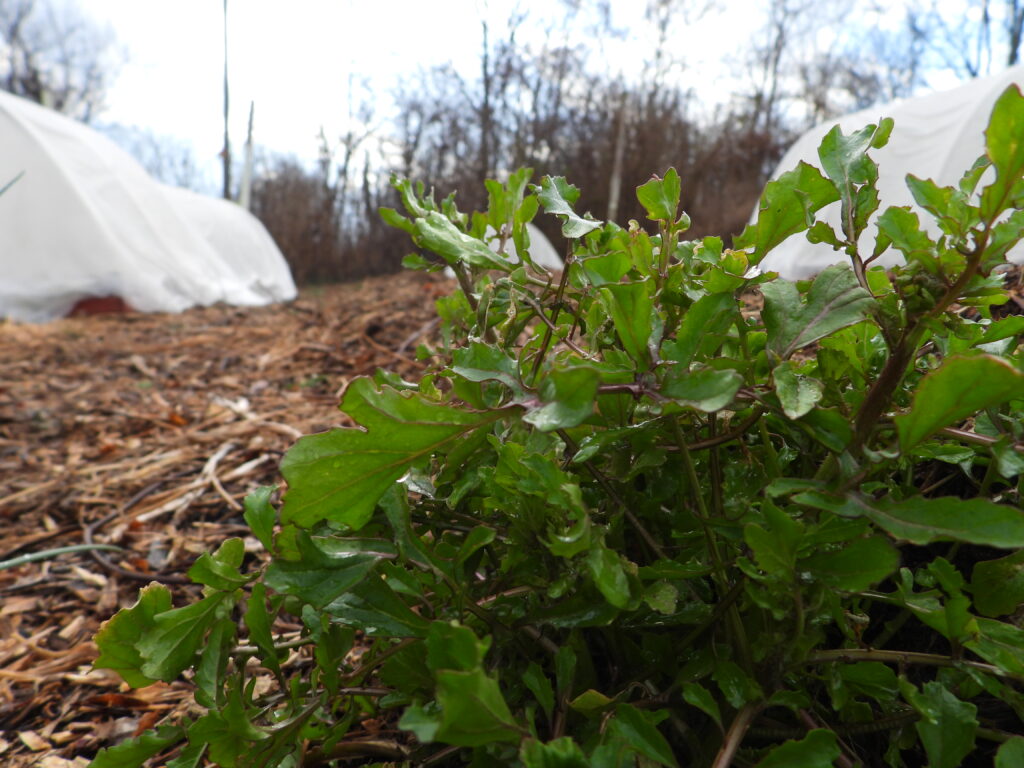
Seedlings are fun, but what about goodies we can eat right now? Most years are so cold up here that, even under cover, leafy greens perish before spring. This winter, in contrast was mild by our standards. A few kale plants are hanging on under the row covers while uncovered arugula is already growing and putting up flower heads. Looks like we’re having sauteed arugula for dinner!
What’s going on in your garden?
